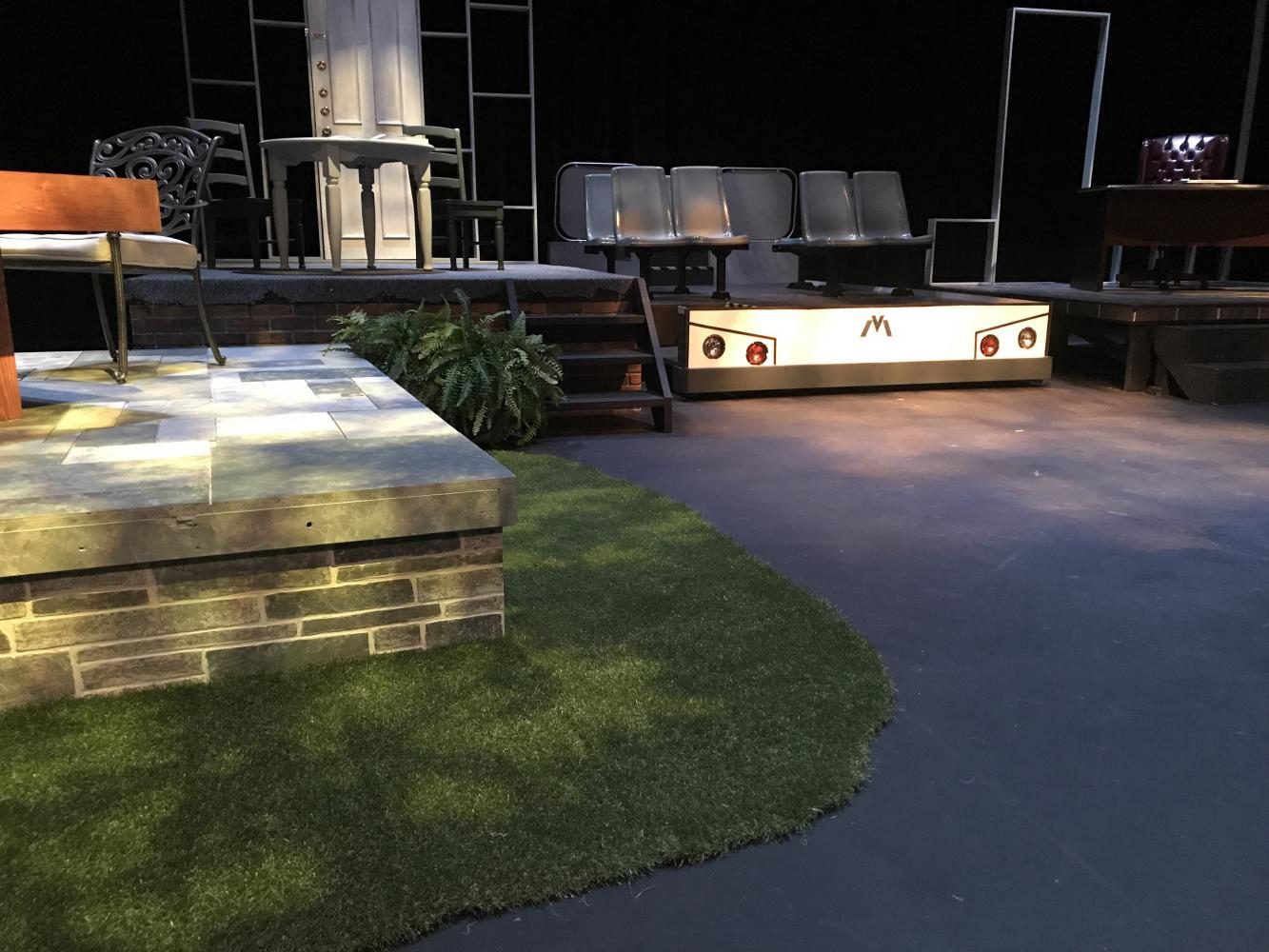White Guy on the Bus: A Poignant Racial Commentary
Sep 6, 2017
Just from judging the scene layout in the Black Box Theatre, I knew Niles West’s production of “White Guy on the Bus” would be impressive. The crew managed to fit 5 different scenes in the small space. On top of an array of green lay a patio set, and above was Shatique’s dingy, North-Philly apartment. Next to it was an moving bus set with working headlights, one of the more elaborate pieces I’ve seen in a Black Box show. Enhancing the city-like scene was Ray’s office, accompanied by Christopher and Molly’s simple living room.
Rap music from the late 90’s and early 2000’s was played over the loud speakers as the audience trickled in. With the addition of the characters’ magical use of DVRs and Razor flip phones, it was soon obvious that the scene was set in the early 2000’s.
Throughout the first act, the plot was almost impossible to follow. The confusing scene changes, such as ones where Ray (senior Anthony Saldaña) gets up and leaves the scene to join Shatique (junior Amber Ilisie), seemed to be choppy. All of this, however, was made clear in the final scene of Act One, where Ray announces that his wife, Roz, is dead. The scene changes were inorganic and rough, since most of them were reliant on flashbacks.
When this twist was revealed in the final scene of Act One, the audience gasped so loud that laughter flooded the room. There were certainly foreshadowing techniques used that showed that Roz, played by senior Riley Pranian, would end up dead. There were multiple instances where Roz mentioned that she wouldn’t quit her job until they “carried her out,” and she even mentioned once that if she weren’t to make light of the horrible situation she was in, she would shoot herself.
Roz acted as an important balance in the show. This was obvious once Ray mentioned that, if she was in a room full of conservatives, she’d be the ultra liberal. Being a white teacher in North Philadelphia public school, she always seemed to be the only realist in the room when it came to race relations. At the very least, she’s her own definition of a realist- which in reality, some audience members would call a racist. She’s a character some more conservative people could connect to, arguing that there can be hatred and prejudice on both sides of a racial divide, and that it’s unrealistic to have a black person be a CEO in every piece of television media.
She frequently argues with Molly, played by Caroline Ryan, who plays the stereotypical, white liberal. She always will stand up to a minority’s defense in conversation. She glamorizes the city, but is terrified when a black exterminator knocks on her door. All these beliefs are in addition to Shatique- a single mother who’s studying to be a nurse, as well as the one black voice against a cast of four white characters. It was very smart for Bruce Graham, the play’s author, to add all of these different view points, so that both the conservative and liberal audience members can relate.
Not one character was shown to be the ultimate bad guy, which could’ve easily been done by a weaker director. I feel the director for this production, Andrew Sinclair, wanted the audience to actually think about what they were watching, and be able to form their own opinions, instead of having the message or belief system be spelled out to them. In this day and age, one that is centered around modern movies and productions, some directors feel the need to give the audiences zero opportunity to think for themselves.
The ability to interpret, however, is what makes the arts so beautiful. Two people can look at the same painting and think about two totally different story lines. This production truly allowed the audience to think for themselves and form their own opinions, as well as focus on their moral takeaway.
Though the show was almost flawless, there were a few minimal critiques that could be made. Some lines seemed to be a bit choppy; characters would go from yelling to regular talking, and then straight back to yelling. The build up was due to two characters yelling at each other, but the scene would hit a peak halfway through. Some scenes, such as the one where Christopher (junior Roland Teivans) was sitting down with Ray, included rough dialogue. Christopher’s lines in particular, to no fault of Roland’s own, just sounded poorly written.
Annunciation of phrases and single words was the main drawback of the play. At times, the dialogue was very difficult to follow. Actors stuttered over a few lines, causing some lines to sound like gibberish.
Similar to the 2016 production Prospect High: Brooklyn, the cast held a post-show discussion. This mainly dealt with transphobia, cutting, and school shootings. Sinclair brought in the District 219’s new Director of Equity, La Wanna Wells, to host the discussion. The actors spoke about bringing the show home to their parents, and especially about conversations that had arisen due to the content of the show itself.
Wells pointed out during the discussion that the audience should use the show as an opportunity to open up a school-wide dialogue about the problems with race. She underscored that we should not be afraid of our opinions, as long as we don’t put down the opinions of anyone else, with the exception of the radical. These discussions are meant to be difficult- that is why they’re so important.




